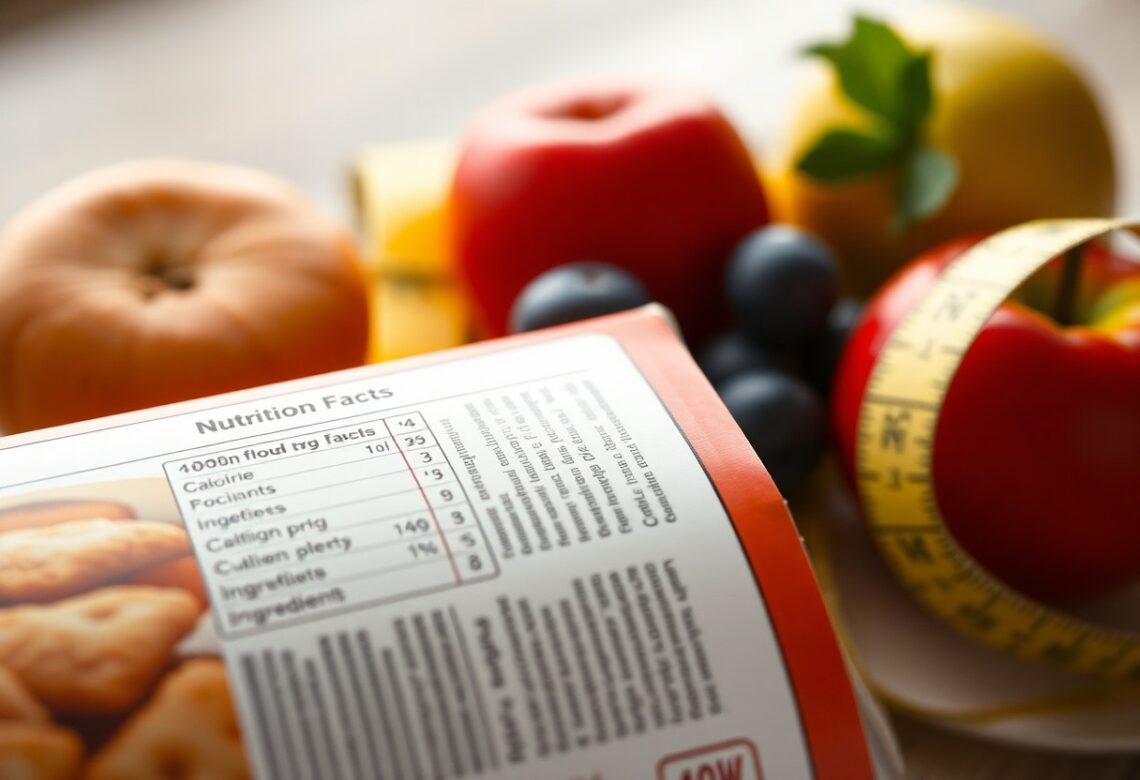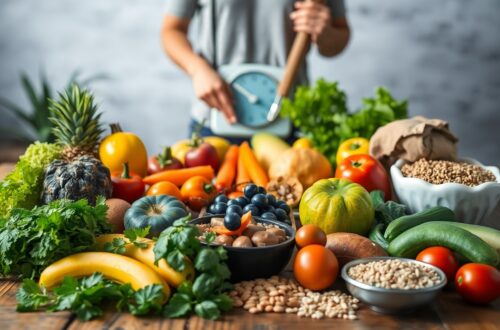There’s a wealth of information tucked away on food labels that can significantly aid your weight loss journey. By understanding how to interpret these labels, you can make informed choices that align with your dietary goals. This guide will equip you with the knowledge to decipher nutritional facts, serving sizes, and ingredient lists, allowing you to take control of your eating habits. Let’s unlock the potential of food labels to support your weight management efforts effectively.
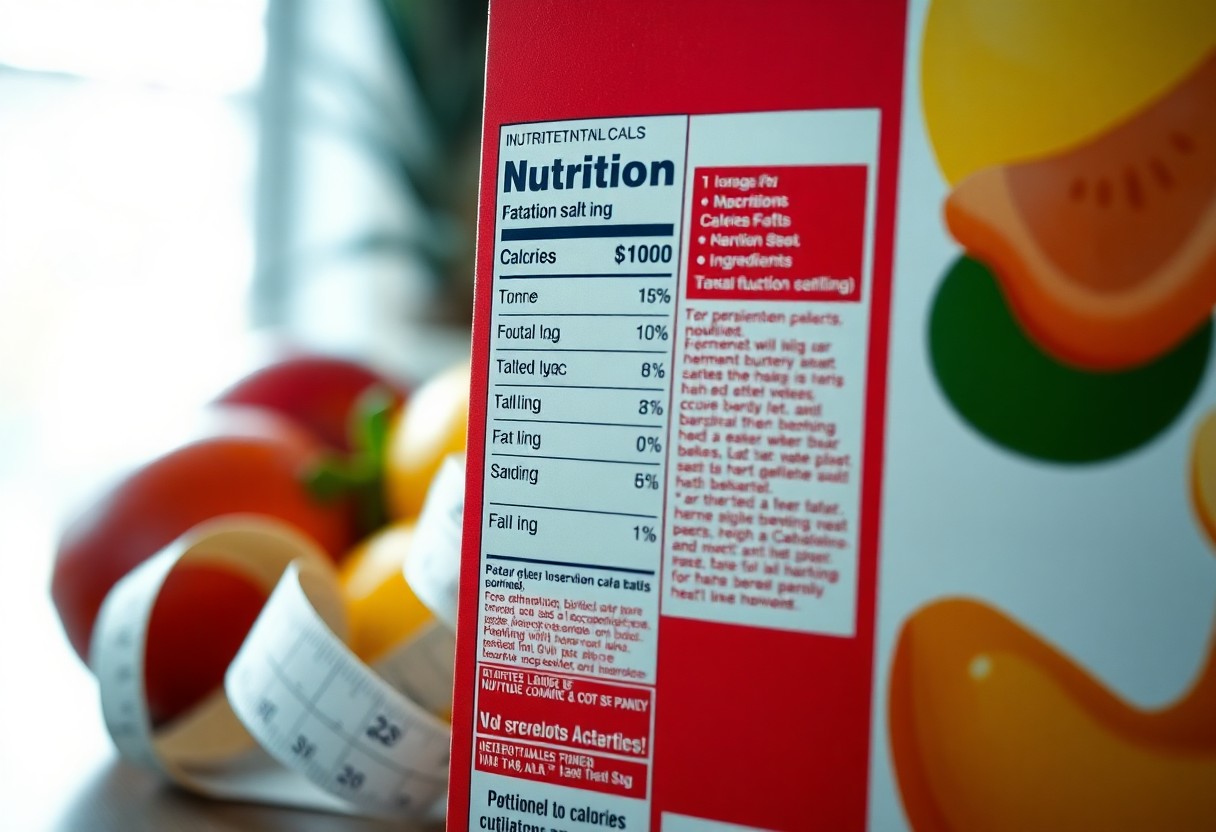
Key Takeaways:
- Serving Size: Understand the serving size listed on the label as it influences calorie and nutrient calculations.
- Calories: Keep an eye on the total calories per serving to maintain your weight loss goals.
- Nutrition Facts: Review the nutritional information to make sure you are choosing foods that align with your dietary needs.
- Ingredients List: Check the ingredients for whole foods and avoid those with added sugars or unhealthy fats.
- Daily Values: Use percent daily values to evaluate how a food fits into your daily nutrition plan.
- Added Sugars: Look for the added sugars category to avoid foods high in sugar that can hinder weight loss.
- Fat Content: Pay attention to fat types—opt for foods with unsaturated fats while limiting saturated and trans fats.
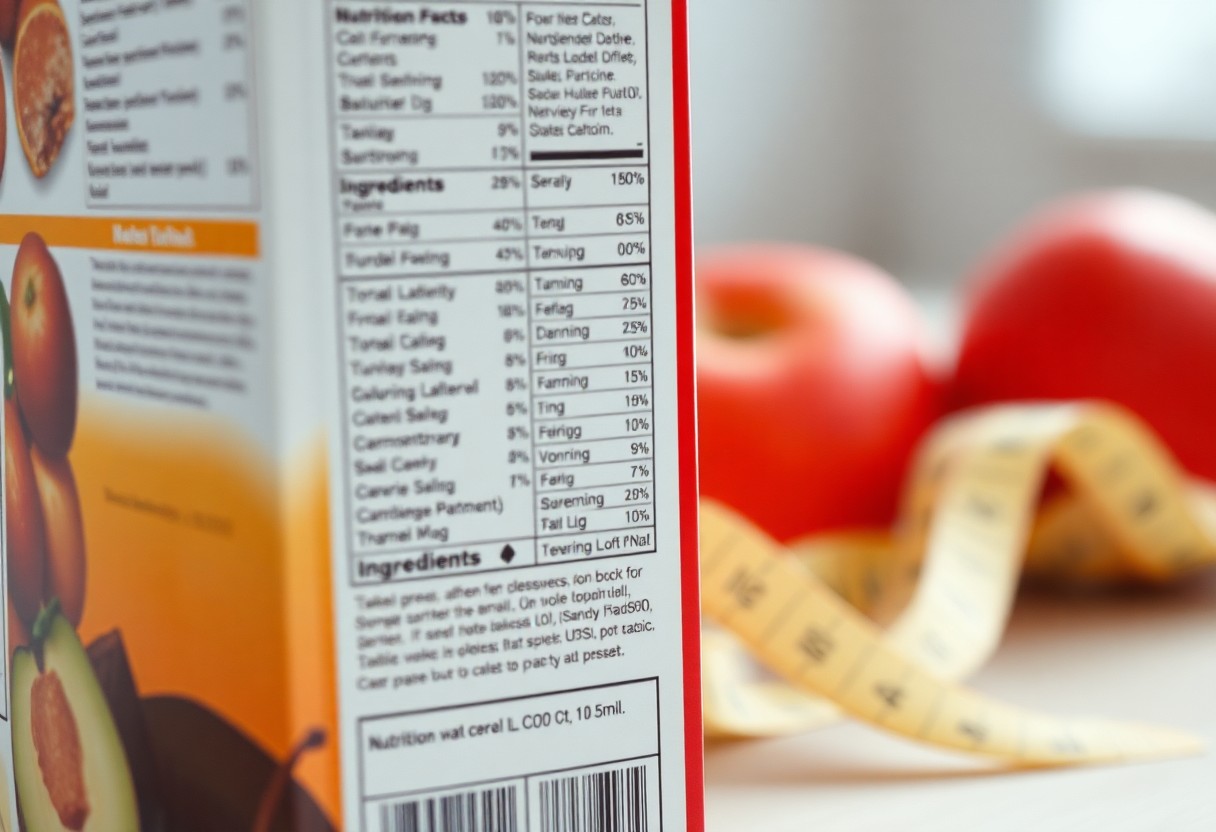
Understanding Food Labels
To effectively manage your weight, understanding food labels is necessary. Food labels provide valuable information that can help you make better choices while shopping. They guide you in identifying not only the nutritional content of products but also serving sizes, which are vital when monitoring your intake. By familiarizing yourself with these labels, you can navigate grocery aisles with confidence and make informed decisions that align with your weight loss goals.
What Information is Included?
While food labels contain various elements, the key components include the nutrition facts panel, ingredients list, and serving size. The nutrition facts panel provides detailed information about calories, nutrients, and daily values for important vitamins and minerals. The ingredients list shows what goes into the product, allowing you to identify any additives, preservatives, or allergens. Serving size is particularly important, as it helps you gauge how much you should consume. This necessary information gives you a clearer picture of what you’re eating.
Common Terms and Their Meanings
Labels often contain terminology that can be misleading without proper understanding. Words like “low-fat,” “sugar-free,” and “whole grain” are commonly used, but their meanings can vary. For instance, “low-fat” simply means the product has a reduced amount of fat compared to the standard version, rather than being completely fat-free. “Sugar-free” could mean a product has less than 0.5 grams of sugar per serving, and “whole grain” indicates that the product contains some whole grains but may also include refined grains. Understanding these terms is vital to making informed choices.
It’s important to analyze these terms in the context of your overall diet. For instance, just because something is labeled “fat-free” doesn’t mean it’s low in calories—it could still be packed with sugars that may hinder your weight loss efforts. Always consider the complete nutritional profile of a product instead of focusing solely on catchphrases. A well-rounded approach to reading food labels will empower you to choose healthier options that support your weight loss journey.
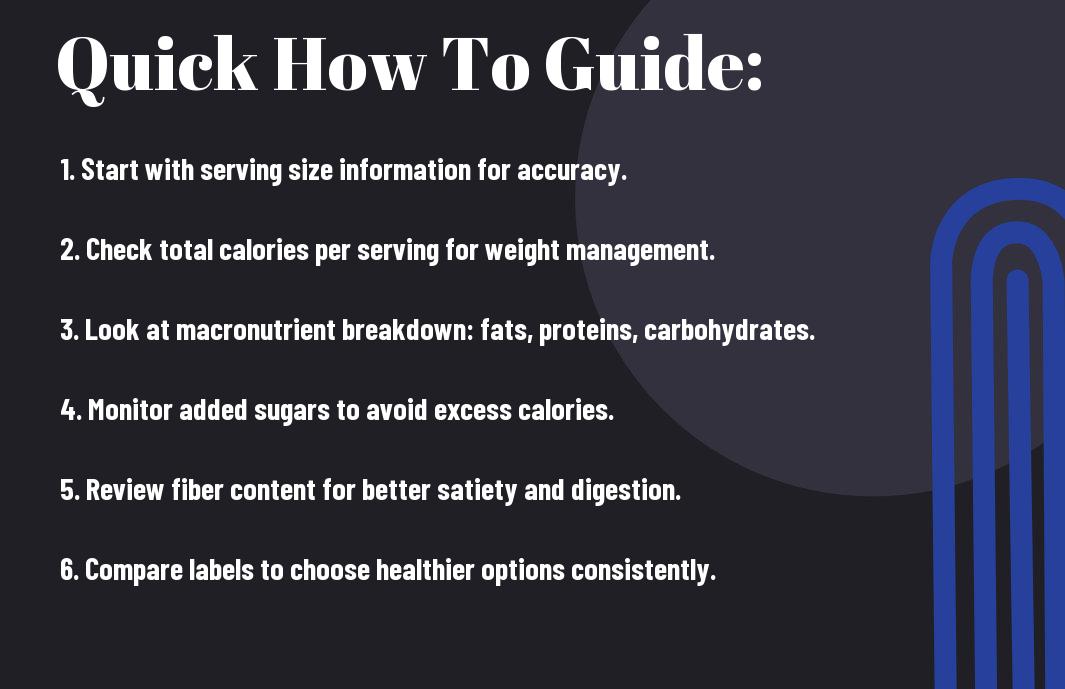
How to Read Serving Sizes
You need to pay close attention to serving sizes on food labels, as they serve as the foundation for understanding the nutritional content of any product. Serving sizes can vary significantly between products and may not align with what you typically consume. By familiarizing yourself with these measurements, you can make more informed choices and accurately assess the calories and nutrients in your diet.
Determining Portion Control
Even small adjustments to your portion sizes can lead to substantial changes over time. Start by measuring out your servings according to the label, which can help you visually gauge how much you should be eating. This awareness can help you understand portion sizes better in relation to your meals.
Adjusting Serving Sizes for Weight Loss
Control your intake by consciously adjusting the serving sizes of the foods you eat. Rather than sticking to the recommended serving sizes on the label, consider reducing those amounts to align with your weight loss goals. This can be particularly effective with calorie-dense foods.
Determining the right serving sizes for your weight loss journey involves finding a balance between enjoyment and moderation. You can start by halving the serving sizes on packaging as a simple way to cut calories without feeling deprived. Focus on incorporating more nutrient-dense foods, like fruits and vegetables, which allow larger portions without a significant calorie increase, ensuring you stay full and satisfied.
Interpreting Nutritional Content
Your ability to make healthy food choices hinges on understanding nutritional content. Familiarizing yourself with Understanding Food Nutrition Labels can empower you to decipher the information presented, including serving sizes, calories, and nutrient breakdown. This understanding helps you to track your intake effectively, ensuring that your selections align with your weight loss goals.
Key Nutrients to Look For
Any nutritious diet should focus on important macronutrients and micronutrients. Look for proteins, healthy fats, fiber, and a range of vitamins and minerals. Nutritional labels provide key data that can guide your eating choices, ensuring that you consume the right balance for optimal health and weight management.
Identifying Hidden Sugars and Fats
While food labels can be straightforward, hidden sugars and fats often complicate your choices. It’s important to scrutinize terms like ‘high fructose corn syrup’, ‘sucrose’, and ‘partially hydrogenated oils’ on ingredient lists, as these can significantly impact your weight loss journey by adding empty calories.
It’s also wise to pay attention to added sugars, which frequently appear in processed foods. These ingredients can contribute to unnecessary calorie intake without providing any nutritional benefits. By scrutinizing the label for total sugar content and ingredients, you can identify products that may sabotage your weight loss efforts and choose healthier alternatives instead.
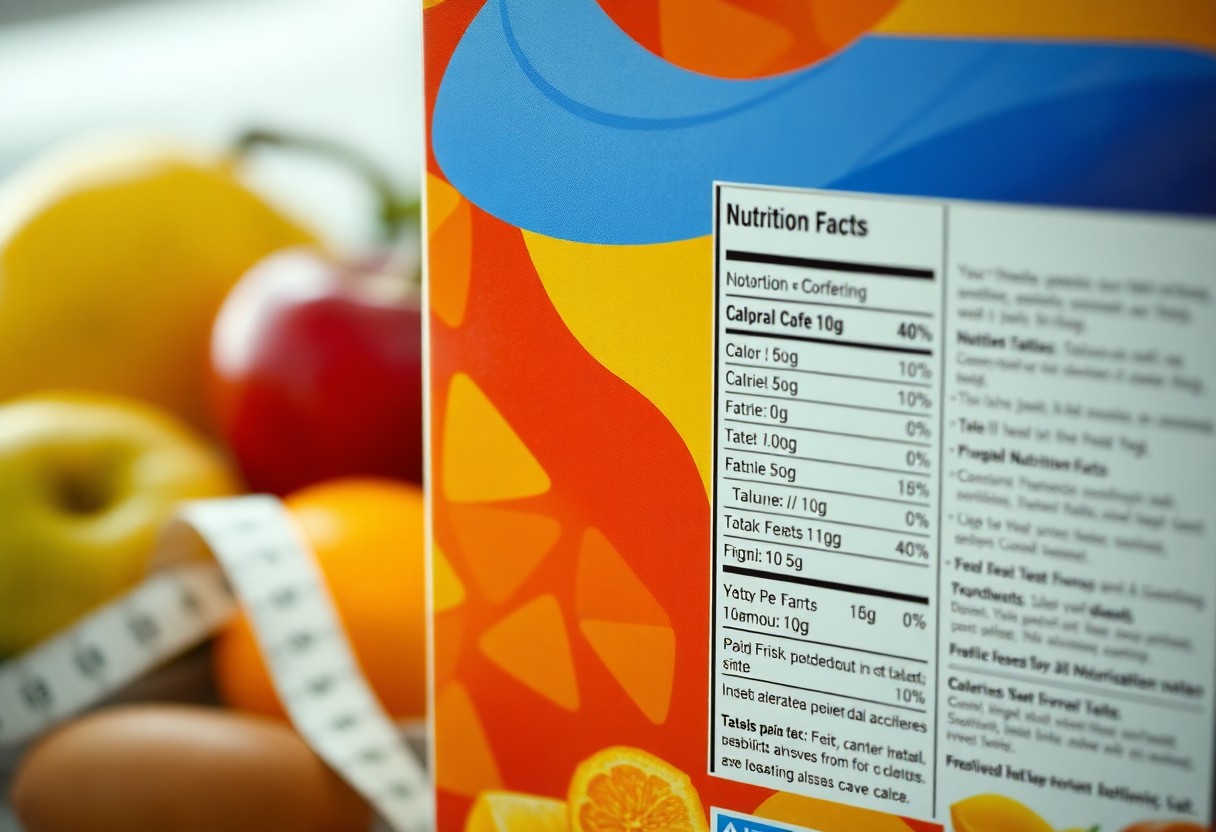
Deciphering Food Ingredients
All food labels come with an ingredient list that can provide you with valuable insights into what you’re consuming. By understanding how to read this list, you can make informed choices that align with your weight loss goals. Ingredients are typically listed in descending order by weight, so look for those that are high in fiber, protein, and healthy fats, while being cautious of added sugars and artificial additives that can sabotage your efforts.
Reading the Ingredient List
Deciphering the ingredient list can seem daunting at first, but it becomes easier with practice. Start by identifying the first few ingredients; these represent the primary components of the food. Look for whole, unprocessed foods like fruits, vegetables, and grains. If you see a long list filled with complex chemicals, it is a sign that the product might be highly processed and less nutritious.
Recognizing Healthy vs. Unhealthy Ingredients
If you want to effectively assess your food choices, it’s important to differentiate between healthy and unhealthy ingredients. Healthy ingredients oftentimes include whole grains, nuts, seeds, and natural sweeteners like honey or maple syrup. On the other hand, unhealthy ingredients often feature trans fats, high-fructose corn syrup, and artificial preservatives.
Plus, understanding food labels is a skill that can significantly impact your dietary choices. Focus on ingredients that are recognizable and whole, as these are more likely to provide important nutrients. Avoid products with numerous additives or those that sound more like a chemistry experiment than food. By cultivating an awareness of what these ingredients mean for your health, you can select foods that support your weight loss journey.
Tips for Smart Choices
For successful weight loss, making informed food choices is necessary. Here are some tips to guide you:
- Focus on whole, unprocessed foods.
- Choose items with fewer ingredients.
- Look for high fiber and protein contents.
- Avoid added sugars and unhealthy fats.
After you become familiar with food labels, you can make smarter decisions. For more information, visit How To Read Food and Beverage Labels.
Comparing Similar Products
While shopping, it’s beneficial to compare similar products to find healthier options. Use the table below to assess key differences.
| Product A | Product B |
| Calories: 200 | Calories: 150 |
| Protein: 5g | Protein: 10g |
| Sugars: 15g | Sugars: 5g |
Utilizing Nutritional Facts for Meal Planning
Similar to creating a personalized roadmap, utilizing nutritional facts can streamline your meal planning. It’s wise to know your daily caloric and nutritional needs, as this will allow you to choose food items that align with your weight loss goals.
To effectively plan your meals, analyze nutritional labels to ensure you’re incorporating a balanced mix of macronutrients. This approach helps you to prepare meals that are satisfying and nurturing while still targeting your weight loss objectives. Keep track of your choices over time; it will empower you to make adjustments as you progress on your journey.
Factors to Consider for Weight Loss
After you decide to begin on your weight loss journey, several factors can influence your success. Understanding these elements can help you make informed dietary choices. Consider the following:
- Your current weight and target weight
- Caloric intake versus expenditure
- Portion sizes and serving sizes
- Meal timing and frequency
- Emotional eating triggers
Knowing these factors can guide you in creating a sustainable weight loss plan that works for you.
Balancing Macros and Micros
Some individuals find it beneficial to focus on balancing macronutrients (carbs, proteins, and fats) alongside micronutrients (vitamins and minerals) when reading food labels. Striving for an appropriate balance can help you feel satisfied while still achieving your weight loss objectives.
Setting Realistic Goals with Food Choices
On your path to weight loss, it’s important to establish realistic goals related to your food choices. Setting achievable targets can motivate you to stay on track without feeling overwhelmed.
Consider starting with specific, measurable goals like reducing sugar intake or incorporating more whole foods into your meals. Instead of focusing solely on numbers, think about how you feel and the habits you want to cultivate. Progress can be incremental; aim to make small, sustainable changes that you can maintain over time. This approach allows you to create healthier eating patterns without resorting to extreme diets that are hard to sustain.
To wrap up
On the whole, understanding how to read food labels can significantly enhance your weight loss journey. By paying attention to serving sizes, caloric content, and nutritional information, you can make informed choices that align with your dietary goals. Look for key components such as added sugars, fats, and fiber to guide your selections toward healthier options. With consistency and awareness, you’ll find that reading labels becomes a valuable tool in managing your weight and improving your overall health.
FAQ
Q: Why is it important to read food labels when trying to lose weight?
A: Reading food labels helps you understand the nutritional content of the food you consume. It enables you to identify high-calorie foods, as well as those low in nutritional value, assisting in making healthier choices during your weight loss journey.
Q: What key elements should I look for on a food label?
A: Focus on the serving size, total calories, total fat, saturated fat, trans fat, cholesterol, sodium, total carbohydrates, dietary fiber, sugars, and protein. These elements provide crucial information regarding caloric intake and nutritional value, aiding in your weight loss goals.
Q: How can I determine if a food is low in calories?
A: Look for foods that offer fewer calories relative to their serving size. A food can be considered low-calorie if it has 40 calories or less per serving. Check the label for the calorie count and compare it with the serving size to make informed choices.
Q: What does the term “serving size” mean, and why is it crucial?
A: The serving size is the recommended amount of food that corresponds to the nutritional information provided on the label. It is vital to consider serving size because it affects the total calorie and nutrient intake; consuming larger portions can lead to unintended weight gain.
Q: How do I identify added sugars on a food label?
A: Added sugars can be found under the carbohydrate section of a label. They may be listed as “sugars” or described using various names such as high fructose corn syrup, cane sugar, or honey. Limit foods with high added sugar content, as they can contribute to unwanted weight gain.
Q: What role does dietary fiber play in weight loss, and how can I identify it on food labels?
A: Dietary fiber is crucial for digestion and can help you feel fuller for longer, making it easier to control hunger. On food labels, it will be listed under total carbohydrates. Look for foods with higher fiber content (at least 3 grams per serving) to support weight loss.
Q: Are there any foods I should avoid based solely on their labels?
A: Be cautious with foods that have high levels of saturated fats, trans fats, and sodium, as these can hinder weight loss efforts. Also, pay attention to foods labeled as “diet” or “low-fat,” as they might contain added sugars or other unhealthy ingredients to compensate for reduced fat levels.
